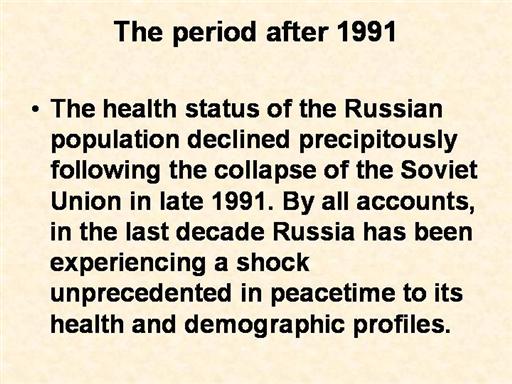A combination of a dramatic fall in the
birth rate and increasing mortality meant that since the mid-1980s,
Russia’s population has shown declining growth rates, which became
negative in 1992 (2). In 1992, the death rate in the Russian
Federation was greater than the birth rate for the first time, and has
been so ever since. Until recently, deaths exceeded births by roughly
60% per year (2). Indications are that these trends have been
accelerating, producing even larger population drops: in the first six
months of 2000 deaths exceeded births by 84%, and in the corresponding
period of 2001 the excess was 75% (14). The natural population
loss rose from 200 000 in 1992 to 800 000–900 000 per year in recent
years (2). In the first half of 2001 a natural decrease (i.e. not
including migration) of 484 900 was reported and in the first half of
2000 the decrease was 522 700 (14). However these figures must be
treated with some caution as it is believed that there was substantial
under-registration in the 2002 Russian census.
